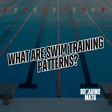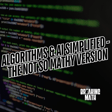
Molecular dynamics simulation with GFlowNets: machine learning the importance of energy estimators in computational chemistry and drug discovery
In this episode of Breaking Math, hosts Autumn and Gabriel take a deep dive into the paper “Towards Equilibrium Molecular Conformation Generation with GFlowNets” by Volokova et al., published in the Digital Discovery Journal by the Royal Society of Chemistry. They explore the cutting-edge intersection of molecular conformations and machine learning, comparing traditional methods like molecular dynamics and cheminformatics with the innovative approach of Generative Flow Networks (GFlowNets) for molecular conformation generation.
The episode covers empirical results that showcase the effectiveness of GFlowNets in computational chemistry, their scalability, and the role of energy estimators in advancing fields like drug discovery. Tune in to learn how machine learning is transforming the way we understand molecular structures and driving breakthroughs in chemistry and pharmaceuticals.
Keywords: molecular conformations, machine learning, GFlowNets, computational chemistry, drug discovery, molecular dynamics, cheminformatics, energy estimators, empirical results, scalability, math, mathematics, physics, AI
Become a patron of Breaking Math for as little as a buck a month
You can find the paper “Towards equilibrium molecular conformation generation with GFlowNets” by Volokova et al in Digital Discovery Journal by the Royal Society of Chemistry.
Follow Breaking Math on Twitter, Instagram, LinkedIn, Website, YouTube, TikTok
Follow Autumn on Twitter and Instagram
Follow Gabe on Twitter.
Become a guest here
email: breakingmathpodcast@gmail.com



















